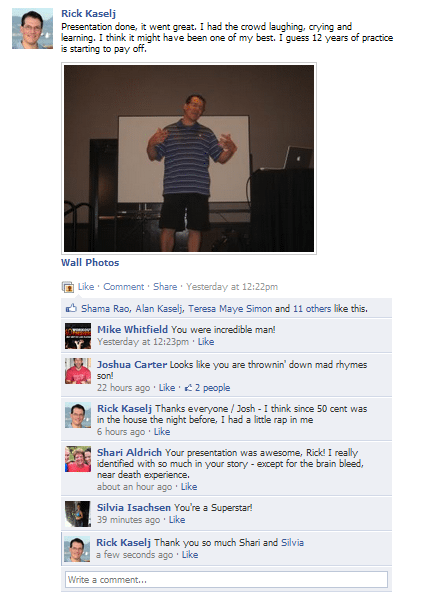![10_Nuggets_on_Shoulder_Injury_Exercises[1]](https://kcdn-dfbd.kxcdn.com/wp-content/uploads/2011/10/10_Nuggets_on_Shoulder_Injury_Exercises1.jpg)
I am in the Las Vegas airport, and I just wanted to chat about how Vegas was and a few things I learned about shoulder injury exercises.
It was a lovely trip to Las Vegas, and the feedback from my presentation was very positive.
Thank everyone that attended. It was a lot of fun sharing my story on how I help health and fitness professionals worldwide, plus people with injuries, with my books, manuals, and videos.
Since I have to fly to Vegas, I make sure I do some learning on the plane.
Things are a little tight to pull out the whole laptop, so I pull out my iPhone and watch video presentations. I brought a bunch with me—two presentations from Muscle Imbalances Revealed and two presentations from Optimal Shoulder Performance.
The DVDs have been sitting on my shelf for some time, but I decided to watch them on the flight to Vegas; they were excellent.
The 4-DVD set is from a presentation done by Eric Cressey and Mike Reinold.
Nuggets from Mike Reinold’s presentation about Shoulder Injury Exercises
- If your client has pain during the last 10 degrees of shoulder abduction, there is a good chance it is Acroclavicular Joint issues or Subacromial Impingement.
- If your client shrugs with shoulder flexion, take the time to find out why. Don’t work through it because the deltoid is overpowering the rotator cuff, which can lead to future issues.
- If you want to eliminate or minimize the effect of gravity on shoulder flexion, you can have your client lie on their side and perform shoulder flexion. For example, if their shoulder issue is on their right side, get them to lie on their left, then move their right arm through shoulder flexion.
- Start to consider including the Beighton Laxity Score in your assessment. I will do a post on this in the future.
- In general, if your client has symptoms with external rotation, it is most likely an anterior capsule or labrum issue. If they have signed with the internal process, it is expected to be a rotator cuff issue.
- The sleeper stretch is excellent for restoring motion but not increasing movement. It can quickly be done too aggressively. One should feel a gentle stretch in the back of the shoulder and not pain in the front of the shoulder.
- The research is not rocking solid for the effectiveness of assessment, so you need to combine your experience and evidence.
- What you see in shoulder pain is often Progression Pathology: Irritation => Inflammation => Fraying => Tearing. When you see your client, you need to ask where they are in the process.
- It is always a balance between being too tight or too flexible in the shoulder. Something in the middle is best.
- Tight athletes tend to get injured more often.
Here is a little video on how to do the Sleeper Stretch:
Rick Kaselj, MS
One last email from a reader:
“Hi Rick, thank you for your very comprehensive notes on your BCRPA conference on SIJ pain.
Your newsletter is totally fantastic and really help me to stay current in my little town on the Sunshine Coast.
You are always on top of things.
I wanted to also let you know that your 6 ways of improving thoracic mobility helped so many of my clients! Excellent explanations and great video demonstrations.
Again, thank you.
I have spent some time yesterday removing all my other fitness injuries/rehab and health newsletters/blogs as I found them tedious to read. But kept yours!
Healthy regards and keep up the great work,”
G
G, I am so happy I can help.
Please do keep letting me know what you think (both good and bad)…



